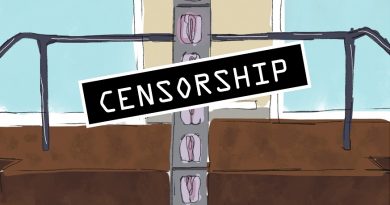Transphobia at UWT and Beyond
If you go to the supermarket, you’ll more than likely be bombarded with tabloids at the checkout—all of which are hyper-focusing on and invading the private life of Bruce Jenner. The interest in Jenner has been magnified not only by Jenner’s successes or familial bonds with the Kardashian clan, but currently as an allegedly trans person.
Though Jenner has not confirmed these allegations, the assumptions of what Jenner’s supposed transition should be are hugely based from pop culture representations of transgender women such as Orange is the New Black and Transparent which portray very feminine gendered trans women. The media represents these women well, however, they negate the fact that these women do not represent all trans women.
Prior to major publicity regarding Jenner’s gender, Laverne Cox in a skit on Conan O’Brien jokingly argued that Conan was “the first transgender talk show host.” Upon correcting her, Cox rebutted “ok, Bruce Jenner.” Though the bit was admittedly humorous, it was also problematic in that Cox publicly called Jenner out, something which is characteristically transphobic. Rather than empowering someone that had already been criticized by cisgender media, she fed into it. In order to build a community with solidarity, acts such as these keep allies apart.
The media representations that are prevalent of trans people, specifically in the instance of violence targeted at trans women, is incredibly disproportionate in regards to the racial disparity in which they occur. Take, for example, the suicide of white 17-year-old Leelah Alcorn last year. Her death was widely reported in mainstream media. In contrast, eight trans women of color have died since the beginning of 2015, none of them receiving a modicum of the exposure in which Alcorn received.
If we continue to ignore the fallacy in media representations of trans identities, we also suffer the impact of lacking policy, even in the instance of UWT. One of the major grievances of trans students at this university is the fact that the university mis-genders them in written form with the incorrect label of Ms. or Mr. Aside from this issue, the lack of accurately diverse representation of trans people creates a large need on an individual level to become acquainted with the real identities of trans people beyond what media shows us.







